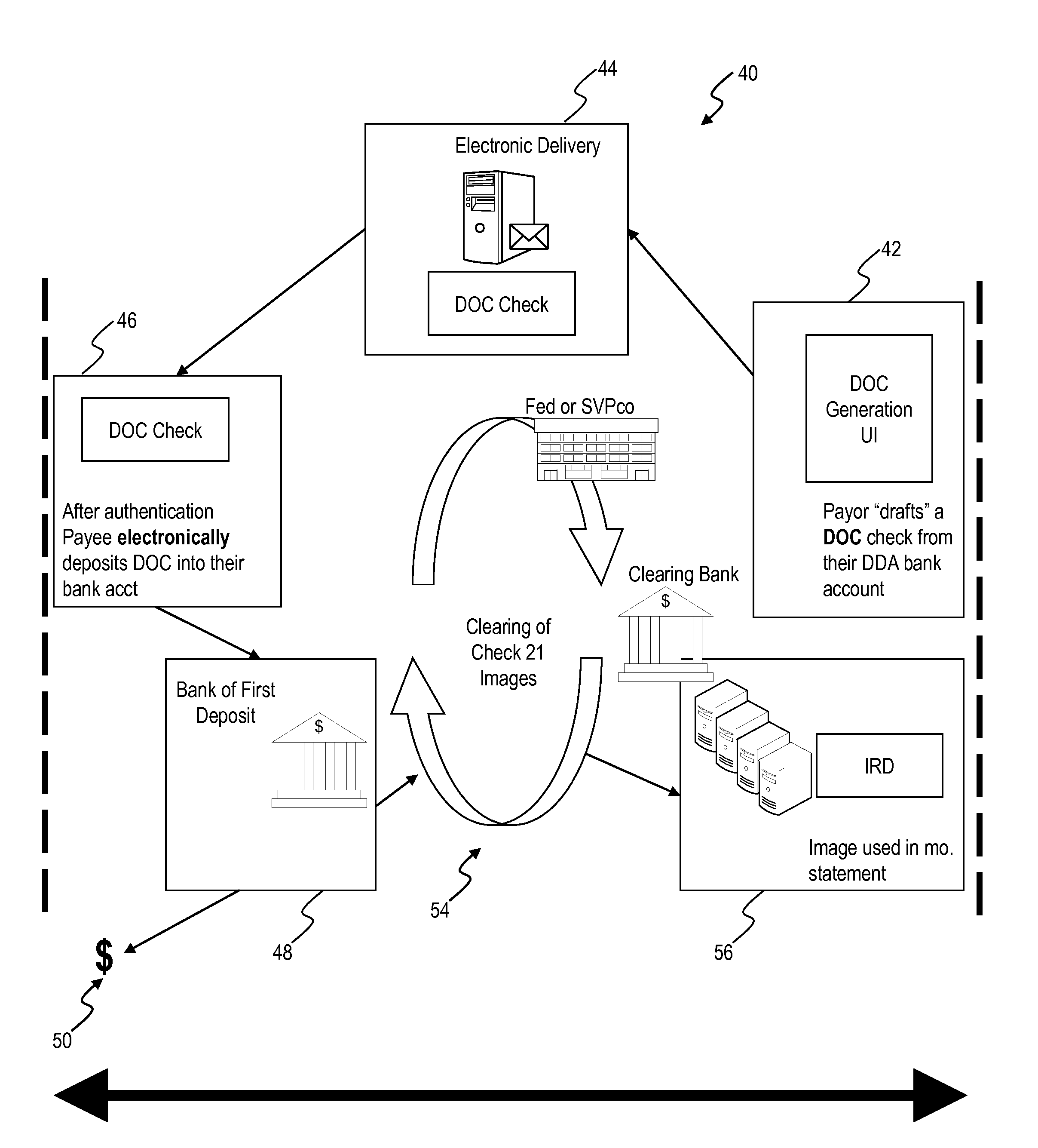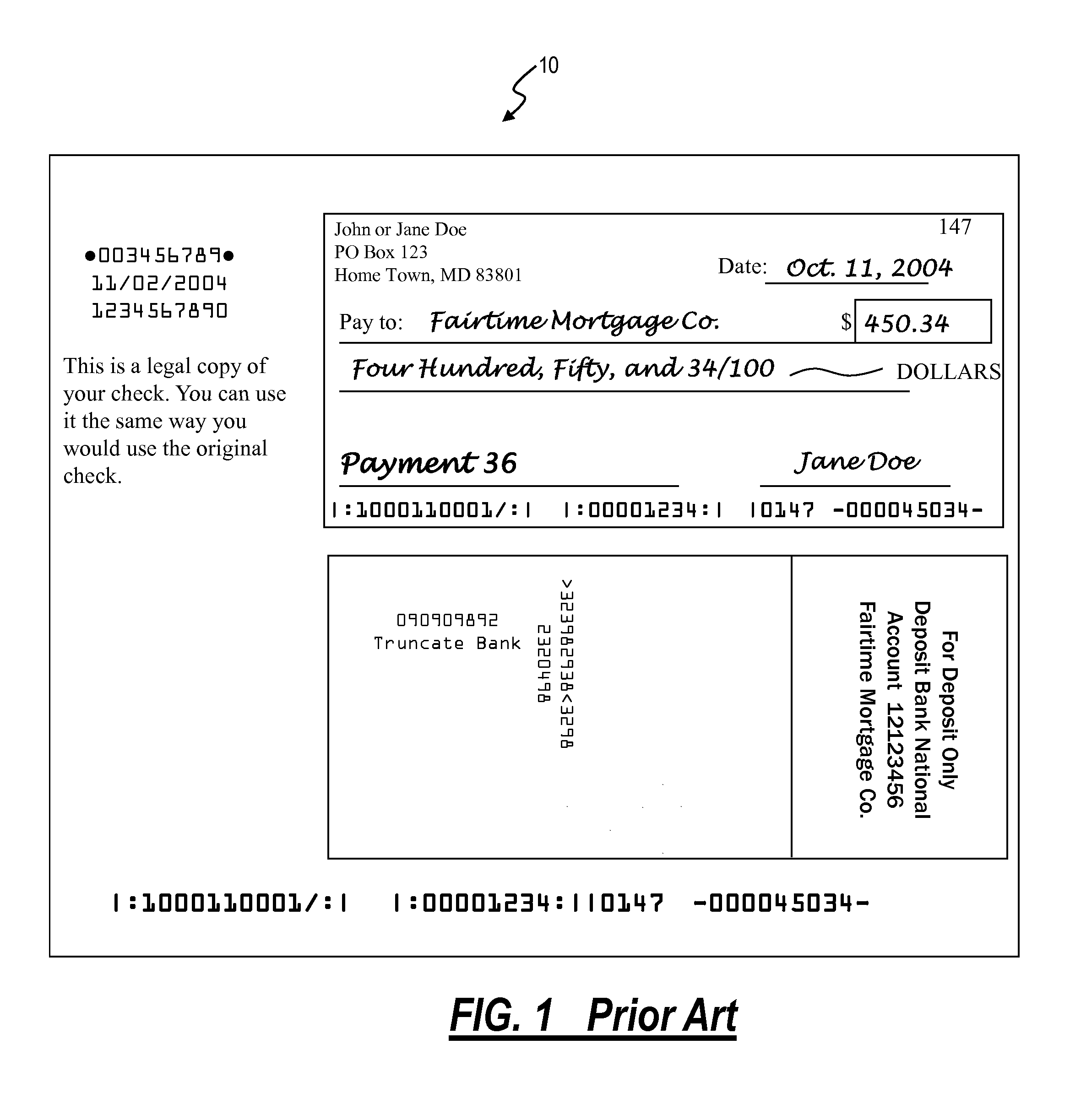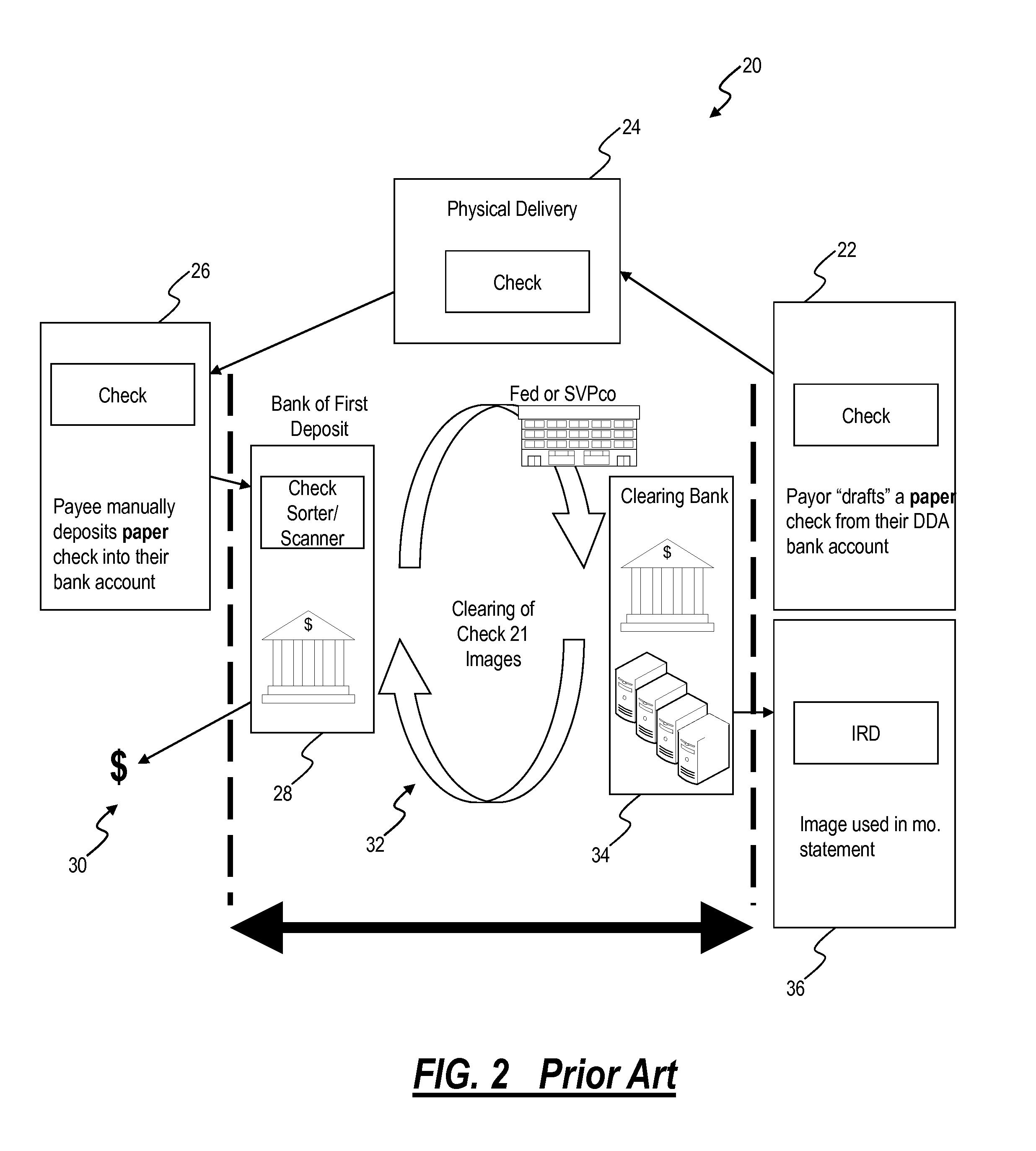Electronic lockbox using digitally originated checks
a digitally generated and electronic lockbox technology, applied in the field of electronic lockboxes using digitally generated checks, can solve the problems of inability to deliver paychecks, complete check clearing and payment systems were shut down, paper checks were a weakness, etc., to facilitate end user digital signing, facilitate understanding, use and management of data, and facilitate dynamic generation of bitmap images.
- Summary
- Abstract
- Description
- Claims
- Application Information
AI Technical Summary
Benefits of technology
Problems solved by technology
Method used
Image
Examples
Embodiment Construction
[0037]In various exemplary embodiments, the present invention provides a mechanism to generate and process digitally originated Check 21 items. These items can be described as a Digitally Originated Check (DOC) (a.k.a. EPO using the Federal Reserve language) processed using an electronic payment system (EPS) which captures payor “metadata” which are instructions regarding the intended payment from a payor to a payee. The metadata is stored in a database or the like for further processing instead of printing a paper check. The type of data which may be captured can include traditional information stored on the front of a paper check, such as instructions for “whom to pay” (payee name, phone number or email address), some value amount (input as a decimal number of some currency), the payment issue date (including recurring dates for monthly or periodic payments), the bank account number from which the payment is to be drafted (traditional checking account number and ABA bank Routing / T...
PUM
 Login to View More
Login to View More Abstract
Description
Claims
Application Information
 Login to View More
Login to View More - Generate Ideas
- Intellectual Property
- Life Sciences
- Materials
- Tech Scout
- Unparalleled Data Quality
- Higher Quality Content
- 60% Fewer Hallucinations
Browse by: Latest US Patents, China's latest patents, Technical Efficacy Thesaurus, Application Domain, Technology Topic, Popular Technical Reports.
© 2025 PatSnap. All rights reserved.Legal|Privacy policy|Modern Slavery Act Transparency Statement|Sitemap|About US| Contact US: help@patsnap.com



